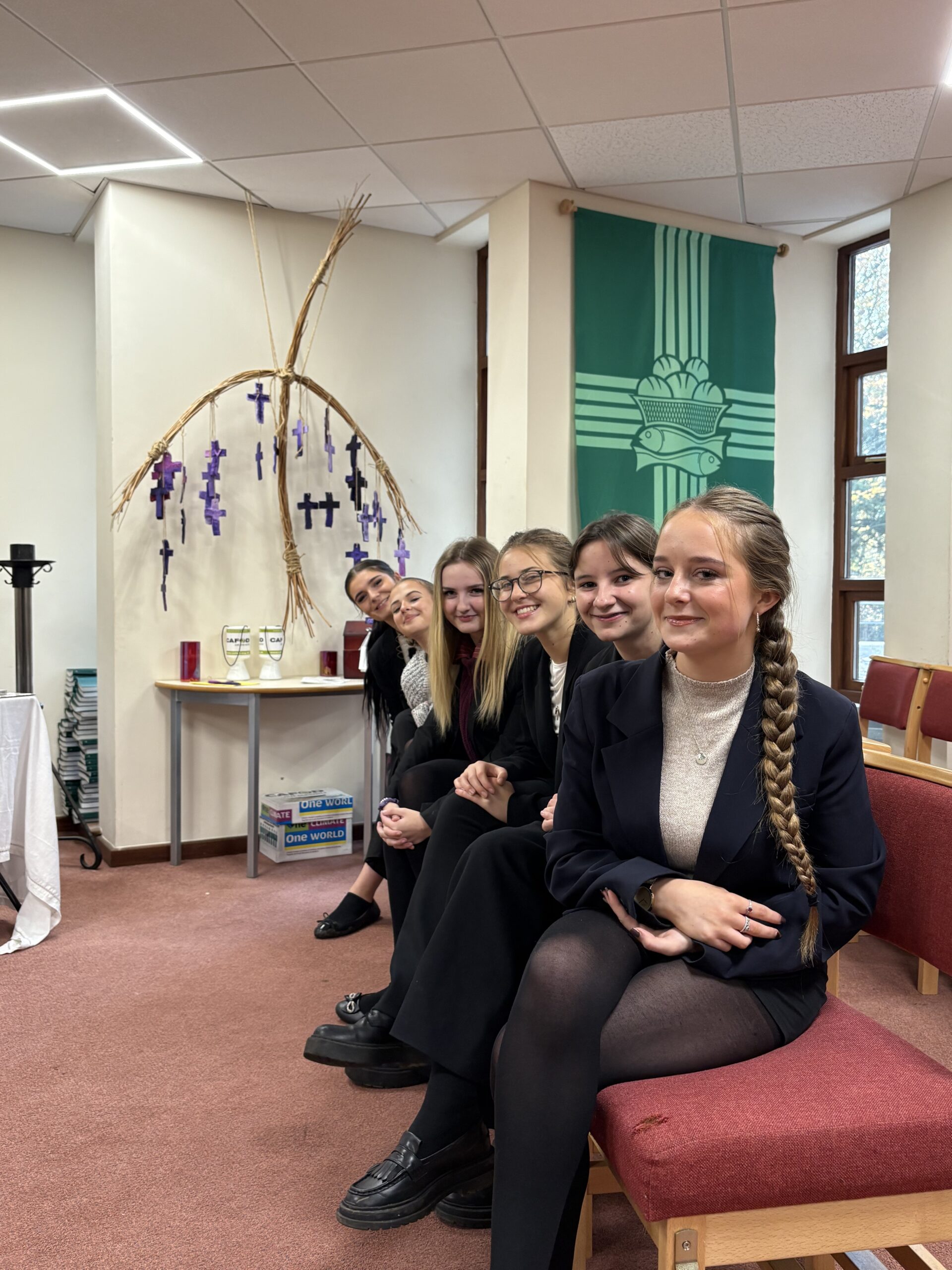
St Leonard’s Site – Victorian Splendour and Exploitation
Mount Beulah
After acquiring the Gallows Field, Mr Joseph Love, a self-made mine owner, built Mount Beulah in 1859. The name Mount Beulah refers to a place of peace in sight of Heaven (Isaiah 62:4). The Halmote Court Map of 1852 captures the transfer of the land between John Clayton and the Love family. It appears that the names were only added in pencil after the map was completed.1 The pencil addition: ‘Love late Clayton’ captures the moment the site was to be transformed into a stately Victorian manor house.

The distinctive shape of the Gallows field can be seen on the map. You can also see the distinctive shape where the two roads outside of St Leonard’s merge. (Here called Old Road and ‘From Durham’)
The 1861 census shows Joseph and his wife in residence with four servants to the house.

1861 Census entry for Mount Beulah
The Ordnance Survey map below shows the relative peace and tranquillity that the site would have given to his family, it also shows the current Lodge, the Stables and other associated buildings.
George Walker’s map of the 1860s shows the place and position of the newly built Mount Beulah.2

It would appear that when the house was built a number of trees were planted at the same time. The picture below shows the ring marks on one of these trees that was felled in 2014, with the tree planted in the late 1850s /early 1860s.

Joseph Love
Joseph Love was a member, and sometime preacher, at the Methodist chapel on North Road. He was anti-Catholic and would dismiss any of his workers if he discovered them to be Catholics. When he died in 1875 he left just under £1,000,000 to his son.3 The family name lives on in County Durham, not least in ‘The Loves’ public house in Broompark, which was established by Joseph’s brother.
Joseph Love had the reputation as an exceptionally ruthless man-on-the-make especially in relation to the way he treated his work force. In Fynes’ 1873 dated ‘History of the Northumberland and Durham Miners’ he is one of only a tiny handful of mine owners to be picked by name for the most dreadful treatment of the men he employed. Now that view may have been coloured by the fact that he had once been an ordinary miner like themselves so they may have hoped for more understanding of their complaints. On the other hand, that too may link back in to his anti-Catholicism as local Catholic mission priests had reputations for supporting miners’ during disputes. In 1882, during a particularly long and bitter strike at Ushaw Moor, Ushaw College allowed evicted miners to set up camp on Ushaw land, assisted in providing tents and ran a temporary corrugated iron ‘tent school’ open to both Catholic and Protestant miners’ children.
Joseph Love died in 1875 and his obituary in the Newcastle Journal on 22nd February stated: ‘He commenced working life at the age of 8 as a trapper boy and closed it as a millionaire.’
After the death of Mrs Sarah Love the house was put up for sale in and advertised in the Newcastle Journal as such:

Newcastle Journal, 7th February 1884.
The contents of the house were sold by auction in May 1884, and the house was advertised again for sale or rent in November 1884.
Springwell Hall
The Reed family were the next family to inhabit the house, and they renamed it Springwell Hall. The name Springwell was already in use in the area, with a Springwell Farm having been in existence for a number of centuries. The Reed family were brewers, and apparently dog lovers.

In 1895 the Ordnance Survey Map below lists the house with its new name. The map also shows the extension to Springwell Hall had been completed – including the creation of the back servants stairs. Like most Victorian grand houses a number of servants were employed. This advert is from the Newcastle Journal on 5th October 1897:

By 1899, a third family was in resident at Springwell Hall with Mr Bain, whose occupation was Her Majesty’s chief inspector of mines resident, also resident.
In the 1911 Census, 12 people are listed as resident at Springwell Hall: 4 family members and 5 servants, with 3 guests in residence on the evening of the Census. This family – the Ritson family – was the final family to inhabit the house before it became a school.

1911 Census entry for Springwell Hall
1895 Ordnance Survey Map
The 1895 Ordnance Survey map brings together much of the history of the site. The lines and shape of the Gallows Field can still be seen in the strip of land between North Road and Fieldhouse Lane that contains Springwell Hall. As it did on the 1838 Tithe map, the land tapers as it moves towards Fieldhouse Lane, with a property at the western edge preventing the strip of land reaching Fieldhouse Lane. On both the west and northern edges of the boundary all maps show a 90 degree indentation at about the mid-point in the boundary line.
The map also shows the proximity of the medieval chapel of St Leonard, just to the south of the Garden House Hotel. The houses that are now built over the site still bear the name ‘St Leonard’s’.

Part 3: Springwell Hall was only a family residence for some 76 year, as in 1935 it was bought by the Diocese of Hexham and Newcastle and the story of St Leonard’s school began: LINK
| Page Views | 345
Updated | 7th November, 2025 |
Latest News

Catholic Schools Inspection
It is a pleasure to share with you the outcome of our recent Catholic School Inspection. It is a credit to the entire community – families, pupils, staff and our parishes – to be graded ‘Outstanding across all areas’. You can read the report here and an accompanying letter from Mr Simmons here.
Published: November 6, 2025



 St Leonard’s New Build Spring 2026
St Leonard’s New Build Spring 2026





